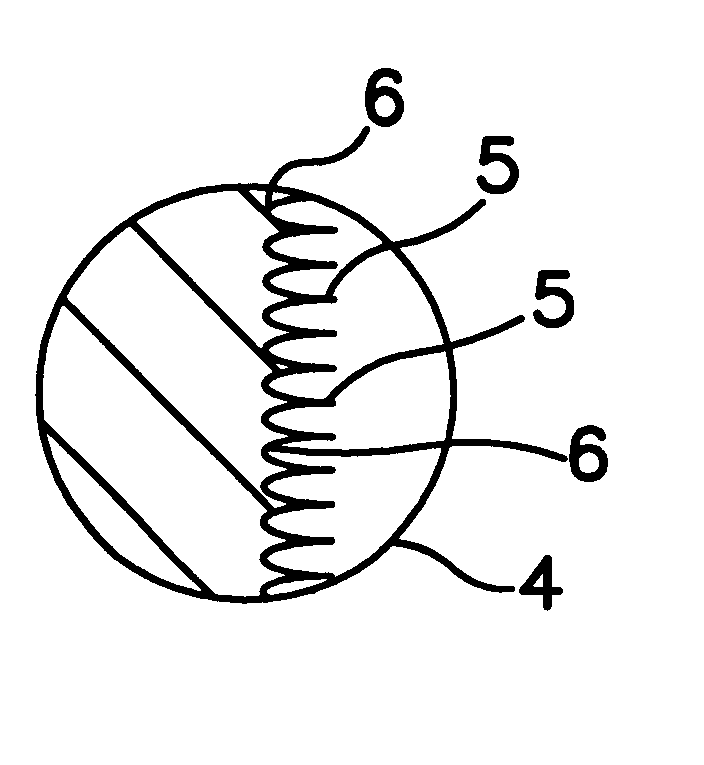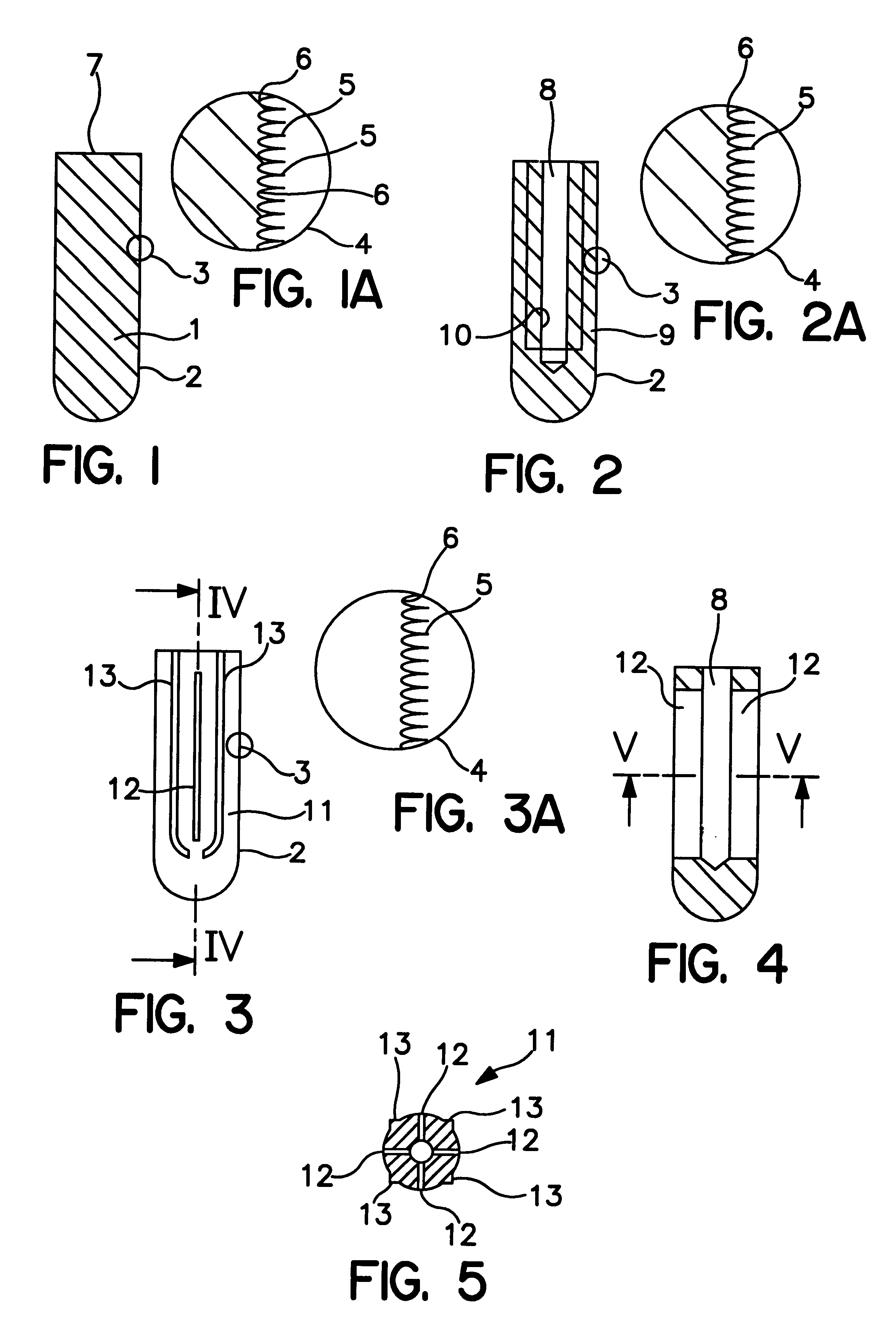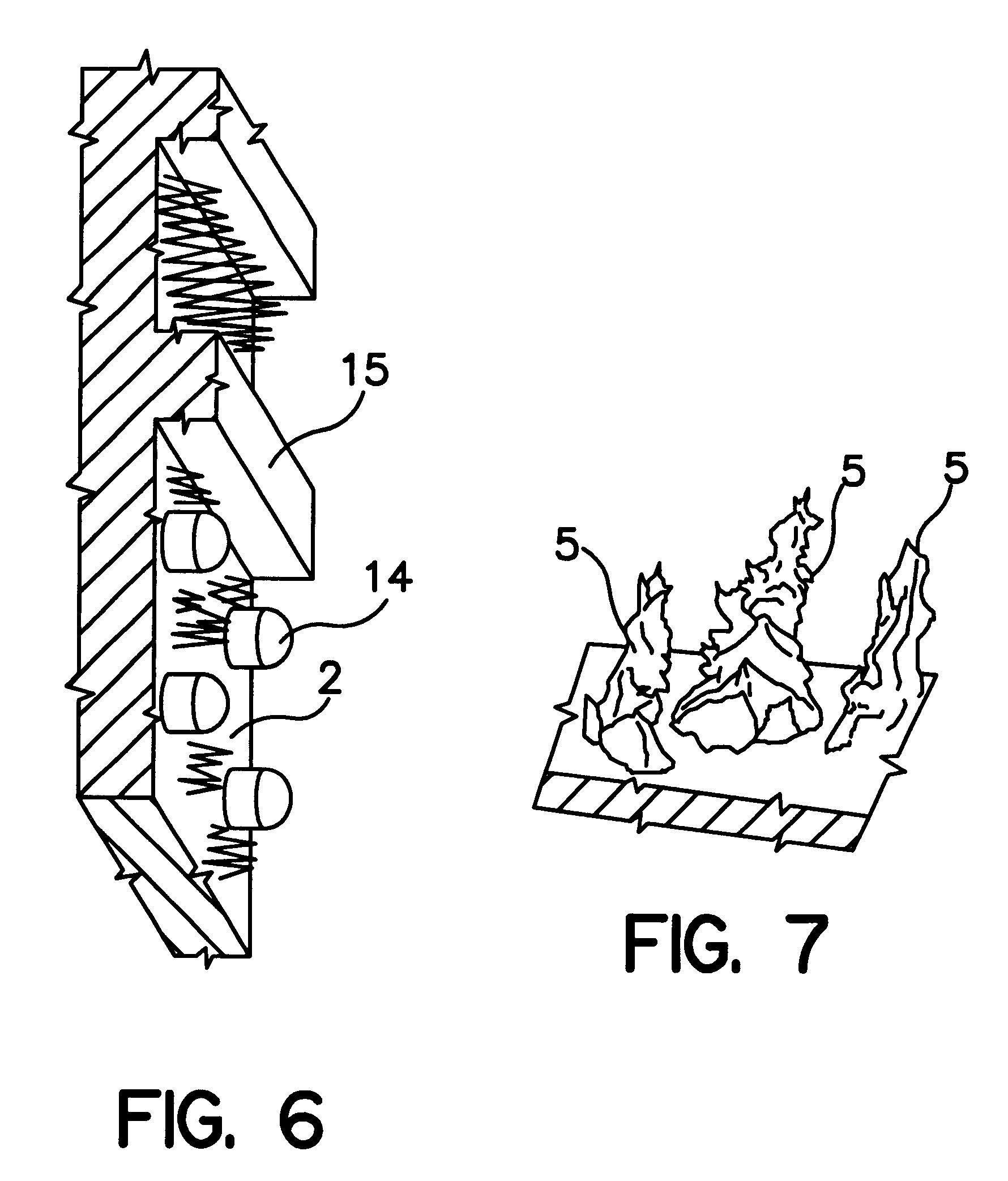Tooth root implant
a technology of tooth root and implant, which is applied in the field of tooth root implants, can solve the problems of consuming a large space, not only complicated, but relatively long ingrowth times of implants,
- Summary
- Abstract
- Description
- Claims
- Application Information
AI Technical Summary
Benefits of technology
Problems solved by technology
Method used
Image
Examples
Embodiment Construction
The object on which the invention is based is that of making available an implant which, specifically when used in the dental sector, significantly reduces the ingrowth times and additionally ensures better homogeneity of implant and implant-retention site. According to the invention, this object is achieved, in an implant of the type set out in the introduction, by the fact that at least part of the outer surface of the main body is fibred, that the fibres of the fibred outer surface have, in the area near the main body, in each case a transition zone with a cross-section widening towards the main body, and that the strength of the plastic in the area of the fibres is greater than in the remainder of the main body.
The implant according to the invention affords the advantage that the fibre-structured outer surface of the implant connects to the body tissue in, as it were, a tentacle-like manner. This not only appreciably shortens the ingrowth times; it also gives a transition zone, ...
PUM
 Login to View More
Login to View More Abstract
Description
Claims
Application Information
 Login to View More
Login to View More - R&D
- Intellectual Property
- Life Sciences
- Materials
- Tech Scout
- Unparalleled Data Quality
- Higher Quality Content
- 60% Fewer Hallucinations
Browse by: Latest US Patents, China's latest patents, Technical Efficacy Thesaurus, Application Domain, Technology Topic, Popular Technical Reports.
© 2025 PatSnap. All rights reserved.Legal|Privacy policy|Modern Slavery Act Transparency Statement|Sitemap|About US| Contact US: help@patsnap.com



